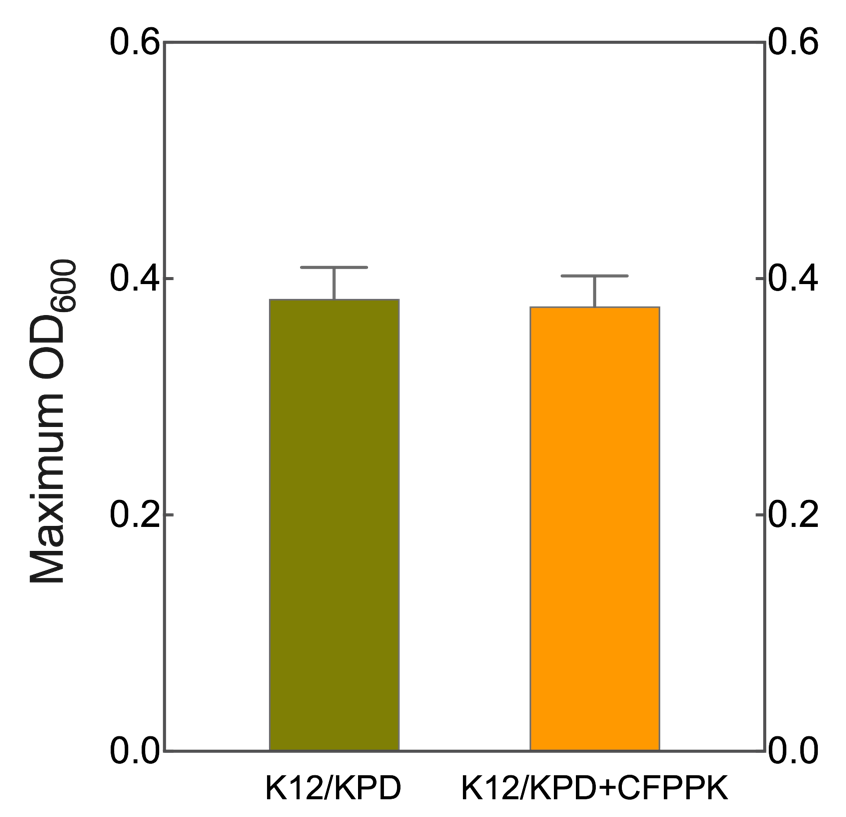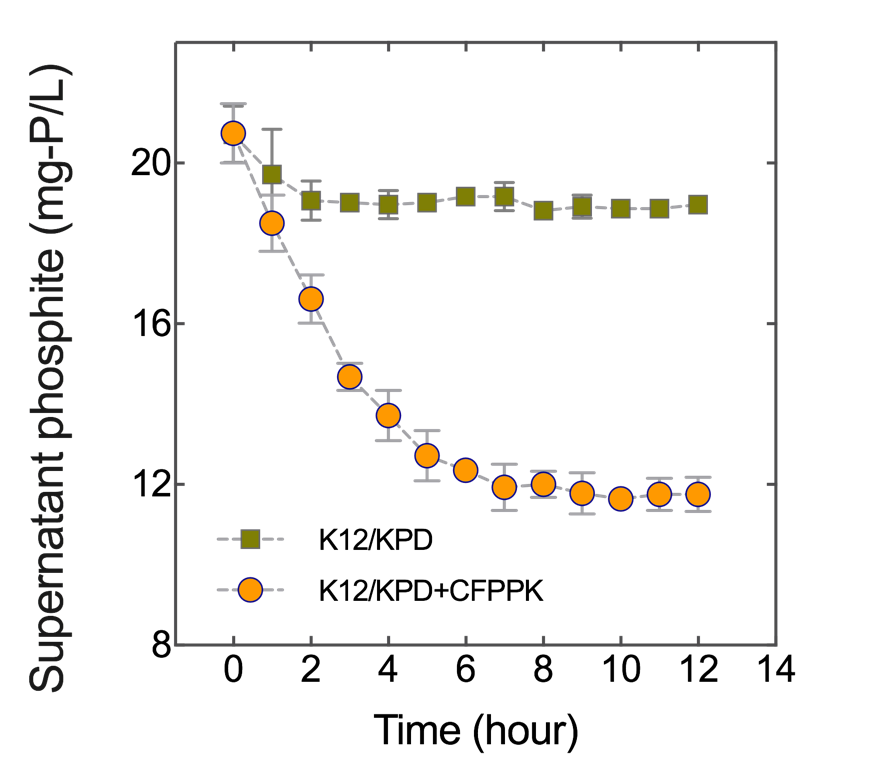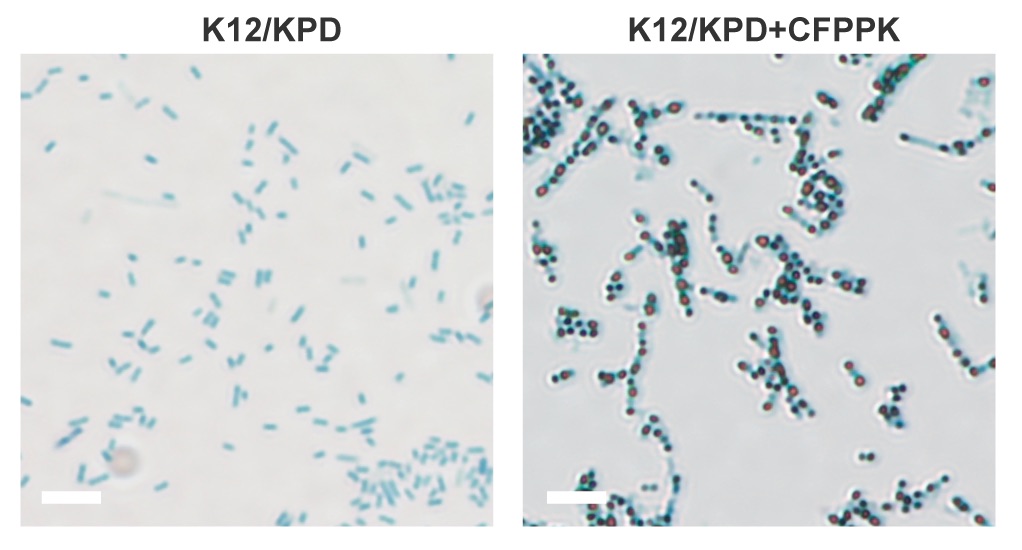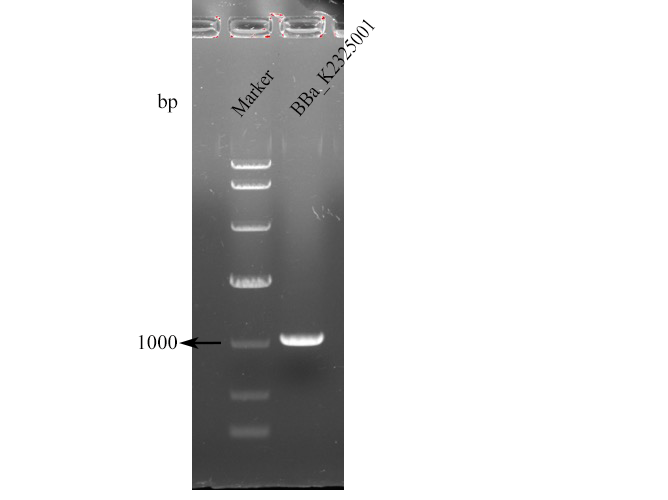Part:BBa_K2325001
Phosphite dehydrogenase (PTDH)
The BBa_K2325001 harbors a coding sequence of Phosphite dehydrogenase (PTDH), which catalyzes the conversion of phosphite to phosphate.
Sequence and Features
- 10COMPATIBLE WITH RFC[10]
- 12COMPATIBLE WITH RFC[12]
- 21COMPATIBLE WITH RFC[21]
- 23COMPATIBLE WITH RFC[23]
- 25COMPATIBLE WITH RFC[25]
- 1000COMPATIBLE WITH RFC[1000]
Usage and Biology
Phosphite dehydrogenase is an enzyme involved in the production of phosphate for providing phosphorus source for the engineering bacteria. This part has been constructed into expression vectors to modify the metabolic pathway of phosphorus in E.coli.
KH2PO3 + H2O + NAD+ ⇒ KH2PO4 + NADH
Improvement made by CPU-Nanjing 2022 TEAM
CPU-Nanjing has improved the existing part by coupling it with the polyphosphate kinase from Citrobacter freundii ATCC 8090 (CFPPK, BBa_K3022002), and the number of the improved part is BBa_K4257033.
Polyphosphate kinase (CFPPK, BBa_K3022002) catalyzes the synthesis of polyphosphate (polyP) using ATP as the substrate in bacterial cells. Because one phosphoric acid radical of ATP is deprived by polyphosphate kinase for polyP synthesis, regeneration of in vivo ATP necessitated the uptake of exogenous phosphorus. That is to say intracellular polyP synthesis can make bacteria be on the "phosphorus starvation" state. Phosphite dehydrogenase (KPD, BBa_K2325001) catalyzes the oxidation of phosphite to phosphate. Generally, although the bacterium that harbors phosphite dehydrogenase possesses the capacity of phosphite oxidation, it does so just to meet its own growth needs. Once there is enough phosphate for its growth, it is unwilling to oxidize more phosphite to phosphate. Therefore, the combination of CFPPK and KPD can force the bacteria to constantly remain "phosphorus starvation" state, thus pushing them to continuously oxidize phosphite.
To validate the function of KPD+CFPPK, we constructed two engineered E. coli K12 strains that overexpress KPD and KPD+CFPPK, respectively. Nutrient-poor synthetic municipal wastewater (SMW) medium with phosphite (P, +3 valance) as the solo phosphorus source was adopted to evaluate cell growth, phosphite utilization, and intracellular polyP accumulation.
1. Cell growth
As shown in Figure 1, the biomass of K12/KPD+CFPPK is almost identical to that of K12/KPD, indicating that KPD+CFPPK would not impose additional metabolic burden upon the host cell.
2. Phosphite utilization
Compared with K12/KPD, K12/KPD+CFPPK oxidized more phosphite, as evidenced by the significant decrease in supernatant phosphite (Figure 2).
3. Intracellular polyP accumulation.
Microscopy observation confirmed that the extra portion of phosphite oxidized by K12/KPD+CFPPK is stored in its cells in the form of intracellular polyP granules (Figure 3).
Gel analysis
Enzymatic properities
|
|
|---|
| None |








